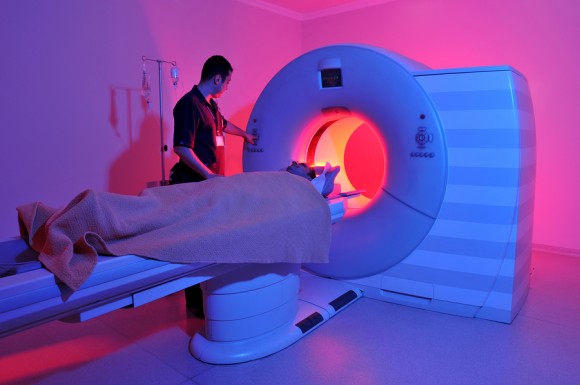Early use of Magnetic Resonance Imaging (MRI) to diagnose work-related lower back pain often leads to higher medical costs, unnecessary medical procedures and prolonged disability, according to new medical research.
Claims in which MRI was used either within the first 30 days of pain onset or when there was no specific medical condition justifying the MRI yielded significantly higher medical costs, even after controlling for severity, says a study in the peer-reviewed medical journal Spine, published by Lippincott Williams & Wilkins.
The study by the Liberty Mutual Research Institute for Safety, which examined more than 3,000 workers’ compensation claims for disabling lower back pain over the course of a full year (2006), found that these early or non-indicated MRIs led to a cascade of medical services in the six-month period post-MRI that included electromyography, nerve conduction testing, advanced imaging, injections or surgery.
These procedures often occurred soon after the MRI and were 17 to nearly 55 times more likely to occur than in similar claims without MRI.
In a prior study using a smaller sample of the same work-related lower back pain claims, early MRI recipients had far higher medical costs than non-MRI claims, averaging more than $12,000 higher. Early MRI recipients were also three times more likely to remain on disability than those who didn’t have MRI, even after controlling for a number of factors that influence these outcomes, the researchers said.
“Being a highly sensitive test, MRI will quite often reveal common age-related changes that have no correlation to the anatomical source of the lower back pain,” said one of the researchers, Glenn S. Pransky, MD, Center for Disability Research, which is part of the Liberty Mutual Research Institute for Safety, in a statement.
According to Pransky, evidence-based practice guidelines for lower back pain recommend against early MRI except for “red flag” indications such as severe trauma, infection or cancer.
Dr. William Gaines, associate national medical director, Liberty Mutual Commercial Insurance Claims, said that the National Committee for Quality Assurance and the American Board of Internal Medicine have emphasized for years that overuse of imaging does not represent good care for low back pain. “These studies confirm that following best practices produces better outcomes for patients at lower costs,” Gaines said.
Barbara S. Webster, lead author of the Liberty Mutual Research Institute’s studies, told Insurance Journal that the studies were done because best practices are not always followed and there is a “high rate of noncompliant MRIs” in the workers’ compensation field. While the data used in the studies was for claims filed in 2006, more recent unpublished data suggests that the utilization of noncompliant early MRIs is still unchanged, she said.
According to Webster, adhering to guideline recommendations “lessens this cascade effect of medical care where potentially unnecessary tests or procedures drive-up medical costs without evidence that they help to effectively treat the pain or shorten disability duration.”
The results provide additional evidence to promote to help providers and patients choose care that is “supported by evidence and avoid tests and procedures that do not contribute to better outcomes,” Webster said.
The Liberty Mutual Research Institute is owned and operated by Liberty Mutual Insurance, a major writer of workers’ compensation coverage. Its research findings are published in peer reviewed literature and shared with health and safety professionals.
Topics Workers' Compensation
Was this article valuable?
Here are more articles you may enjoy.



 Former CEO of Nonprofit P/C Statistical Agent Sentenced for Stealing Millions
Former CEO of Nonprofit P/C Statistical Agent Sentenced for Stealing Millions  UPS Ripped Off Seasonal Workers With Unfair Pay Practices, Lawsuit Alleges
UPS Ripped Off Seasonal Workers With Unfair Pay Practices, Lawsuit Alleges  Twice Injured Firefighter Loses Second Workers’ Compensation Claim
Twice Injured Firefighter Loses Second Workers’ Compensation Claim  Senators Launch Probe Into Demotech’s Ratings in Florida
Senators Launch Probe Into Demotech’s Ratings in Florida 

